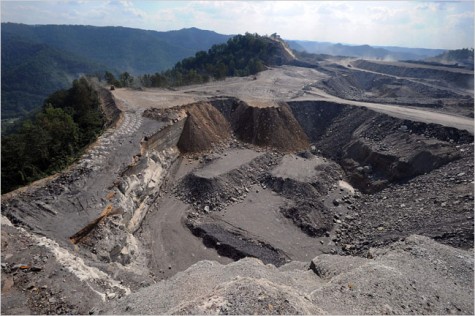4th Circuit won’t block W.Va. stream cleanup ruling
May 31, 2017 by Ken Ward Jr.
We had a story in this morning’s paper about the latest ruling by U.S. District Judge Robert C. Chambers to again confirm that mountaintop removal mining has had devastating impacts on water quality in West Virginia’s coalfields. Meanwhile — in another case that was heard before Judge Chambers — the 4th U.S. Circuit Court of Appeals was handing a defeat to the federal Environmental Protection Agency.
EPA has been fighting to block pending a full appeal a previous ruling by Judge Chambers in a suit in which citizen groups are trying to force federal and state officials to clean up streams that have been contaminated by mining pollution.
Judge Chambers had already refused to stay his own decision pending that appeal, and now the 4th Circuit has likewise refused to grant the Trump EPA a stay.
Now, let’s remember why this case matters. Here’s how we’ve explained it before:
The latest case specifically raised questions about compliance by the DEP and the EPA with Clean Water Act language that requires periodic listing of streams that don’t meet water quality standards. State agencies are supposed to publish such lists, and then develop cleanup plans, called Total Maximum Daily Loads, or TMDLs. When states don’t do so, the EPA is supposed to step in to ensure rivers and streams are restored.
Chambers noted that the goal when the Clean Water Act was passed in 1972 was to “solve the nation’s water quality crisis by 1985. But, the judge recounted, the EPA itself has missed key deadlines for TMDL development and across the country, citizen groups have had to go to court just to get the process started in their states. In West Virginia, a legal settlement 20 years ago was needed to jump-start the effort.
The judge noted in Tuesday’s ruling that the DEP previously had found — before a change in policy that was challenged in the lawsuit — that conductivity, or “ionic toxicity,” is the stressor causing biological impairment in 179 West Virginia streams. Environmental groups said in legal filings that there are nearly 400 other streams with similar problems.
In 2012, the DEP, under then-Secretary Randy Huffman, stopped issuing TMDLs addressing biological impairment, a decision that sparked the lawsuit that prompted Chambers’ ruling.
Chambers noted that the DEP repeatedly has put off the date when it would complete that new method, and it also put off its estimated dates for developing any new TMDLs for biological impairment.
In 2012, the agency said it would take a year. The DEP said the same thing in 2014 and in 2015. Most recently, the DEP said, in July 2016, that it “will still be some time before” the agency completes the new method.
“For over four years, WVDEP has made successive promises to deliver the new methodology to the West Virginia Legislature and for four years has failed to even develop a methodology, to say nothing of actually submitting it to the Legislature,” Chambers wrote. “WVDEP has not produced a schedule for when the methodology might be finished.”
With the 4th Circuit’s refusal to grant a stay, the EPA now has 14 days (from yesterday) to make a decision about the state’s inactions. Federal officials can continue to appeal the ruling by Judge Chambers — the government brief is due in mid-June — but EPA will still have to do something long before the appeal is decided.

 Subscribe to the Coal Tattoo
Subscribe to the Coal Tattoo
